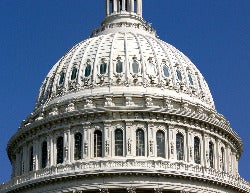 As a documentary filmmaker who’s frequently filming all over the world, it’s easy to overlook what’s happening in my backyard. So two years ago, after finishing a film that took me to eight countries on three continents, I decided it was time to reconnect with my own hometown. Hence the making of "The Other City," opening today in Los Angeles.
As a documentary filmmaker who’s frequently filming all over the world, it’s easy to overlook what’s happening in my backyard. So two years ago, after finishing a film that took me to eight countries on three continents, I decided it was time to reconnect with my own hometown. Hence the making of "The Other City," opening today in Los Angeles.
I've lived in the Washington, D.C. area most of my life. I love this city. Its glistening marble monuments still stir something inside me whenever I see them. But I'm also very aware that this is “official Washington.” There’s another city — the one that residents refer to simply as “D.C.” Our nation’s capital has always been a divided city and the “two Washingtons” rarely meet. It’s this dichotomy between the “powerful” and the “powerless” living literally side by side that’s always intrigued me as a filmmaker.
While doing research in the Washington Post archives, I came across some articles by Jose Antonio Vargas on D.C.'s HIV/AIDS epidemic. I was stunned. How could I have missed the fact that Washington, D.C. had the highest rates of any city in the nation – with rates that are as high (or higher) than some countries in Africa? When I mentioned this to friends, they too expressed disbelief, “Washington, D.C., really?”
There were other facts that shocked me as well: AIDS is the leading killer of African American women ages 25-34 in this country.
Sheila Johnson, an executive producer on my last film, "Kicking It," immediately understood why this was a story that needed to be told. She offered her full support and came on board as producer.
Over the course of the next year, we documented the stories of individuals whose families have lived in D.C. for generations. I came to understand how HIV/AIDS intersects and reflects many of the injustices and inequities that plague our capital and our nation—from poverty and race and homophobia, to health care, incarceration rates and education.
And I got to do what I love best about filmmaking – spend time with some incredible people that I probably would never have met if I wasn’t working on this film. I met J’Mia, a young mother of 3 who is living with AIDS and was about to be evicted from her apartment due to bureaucracy. J’Mia is stubborn and courageous – and determined to provide for her young children. During the six months of filming, I always looked forward to the days (usually twice a week) that I spent with Ron Daniels who runs a needle exchange van. Whether it was 10 degrees in the midst of a snowstorm – or 100 degrees in the height of summer – Ron was always out there. He showed me a reality of this city that most people choose to ignore. I also never imagined there could be such joy in a place where people are so sick – and death is a common occurrence. Joseph’s House, a hospice for those with HIV/AIDS is truly a magical place.
But most of all, what I take away from my time making this film is the sense of our common humanity.
I hope this film will not only spark much needed dialogue about AIDS in America, but also make us aware of “the other city” that is part of every city in America.
